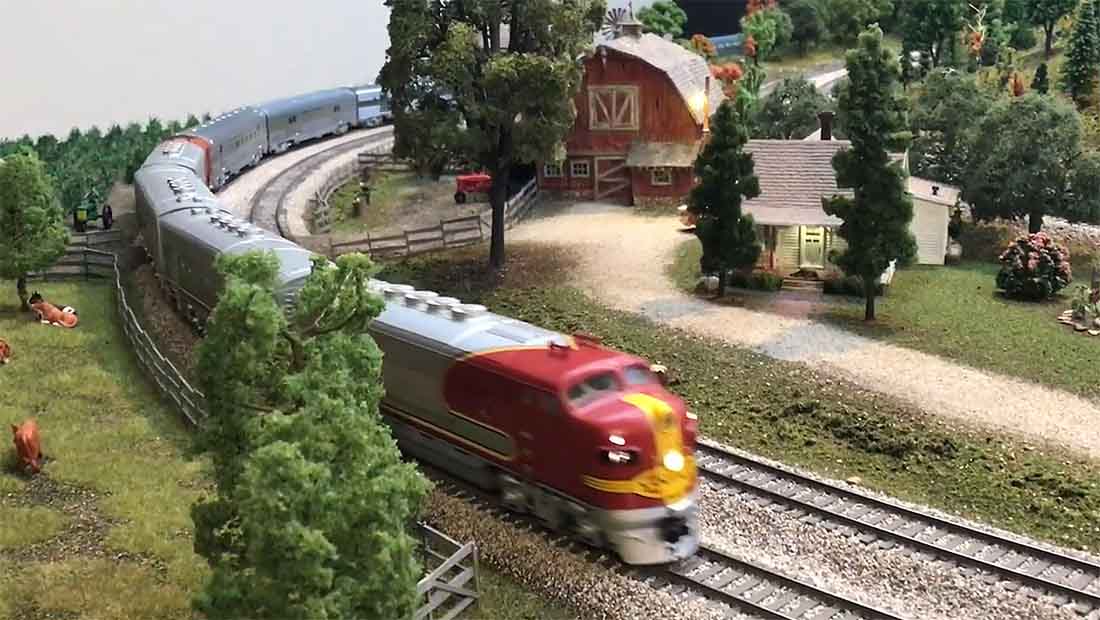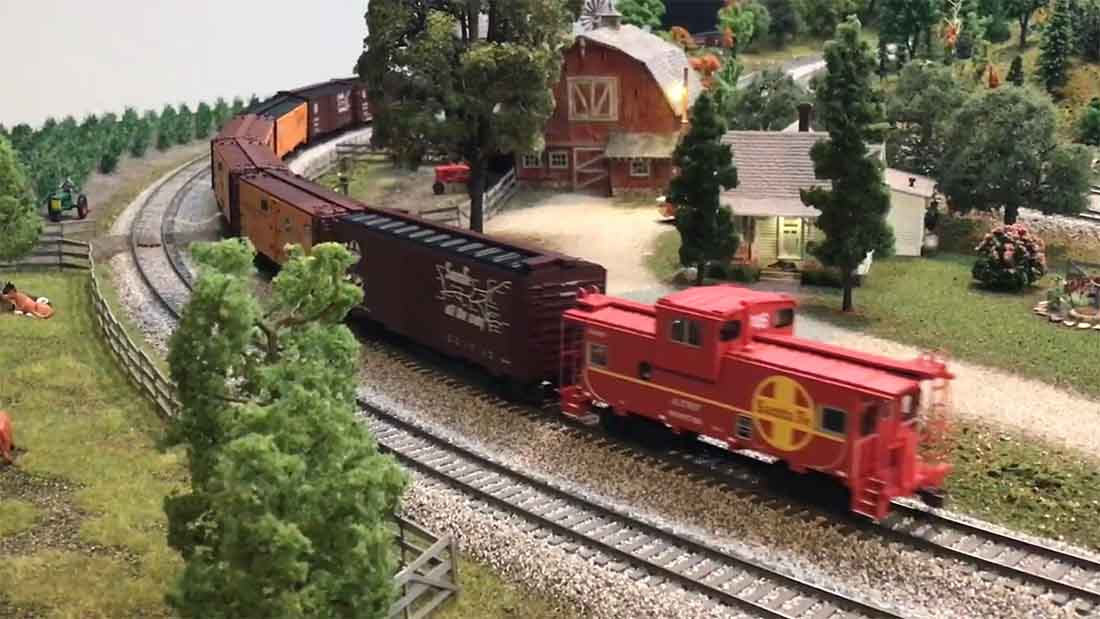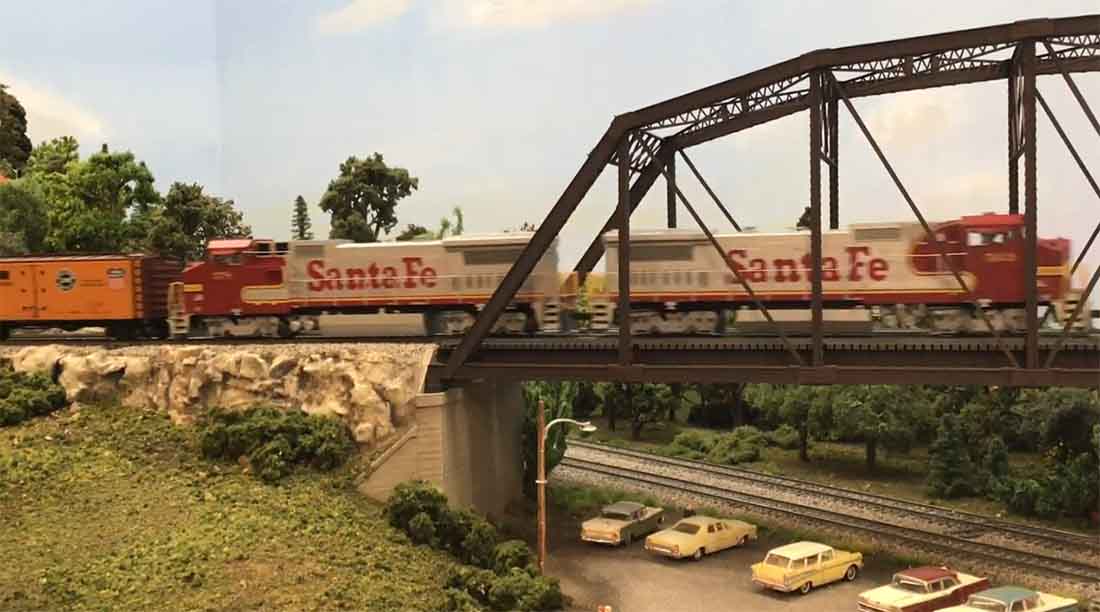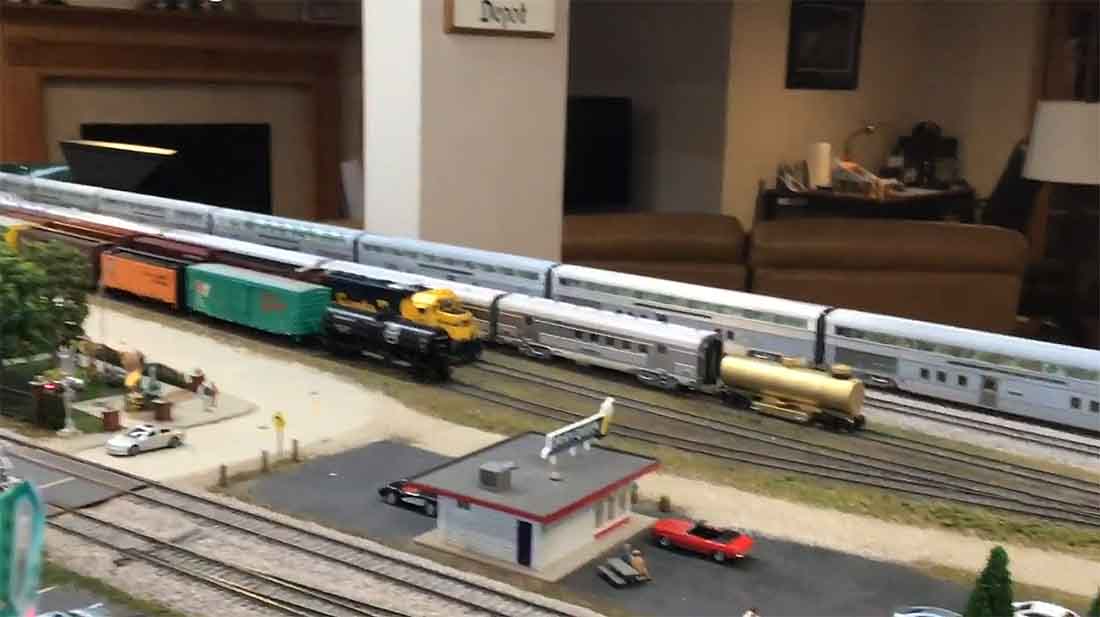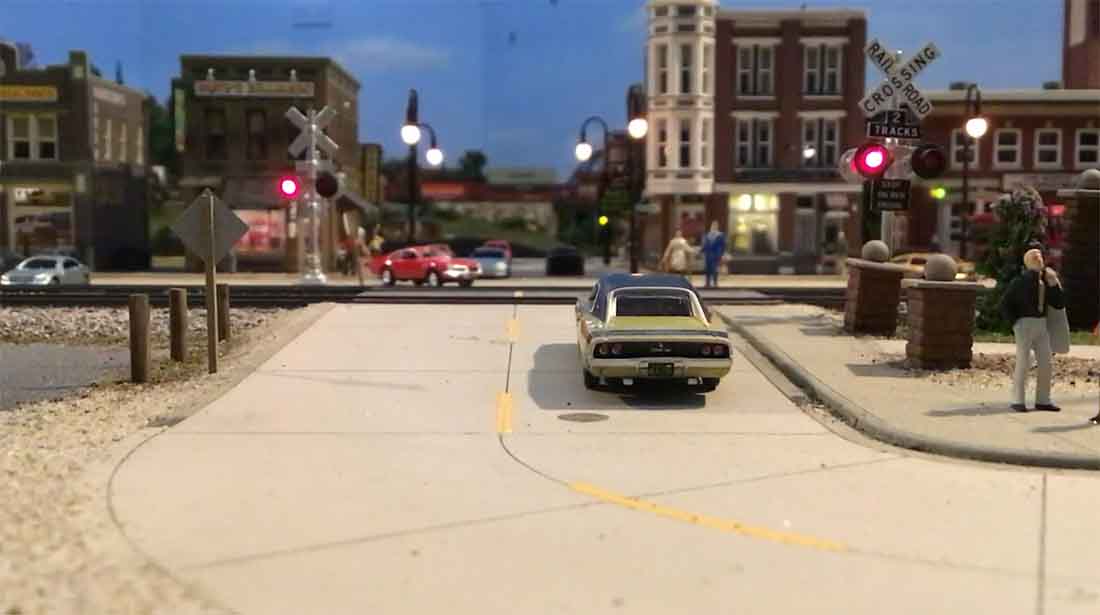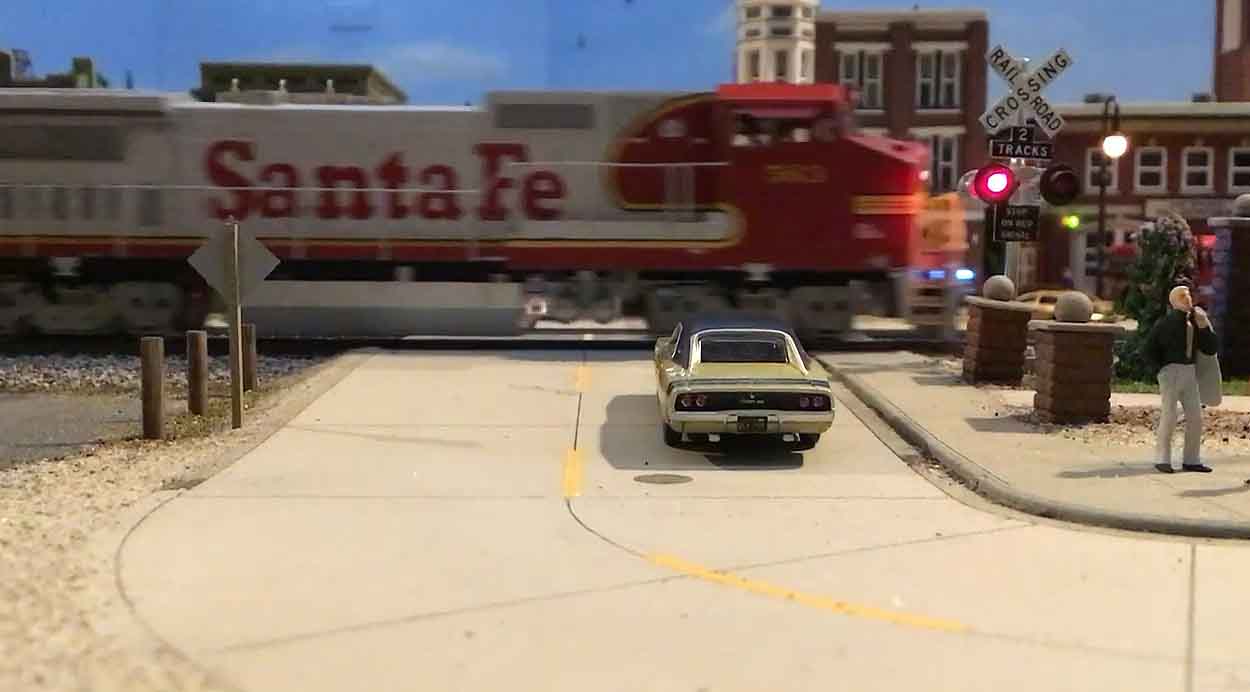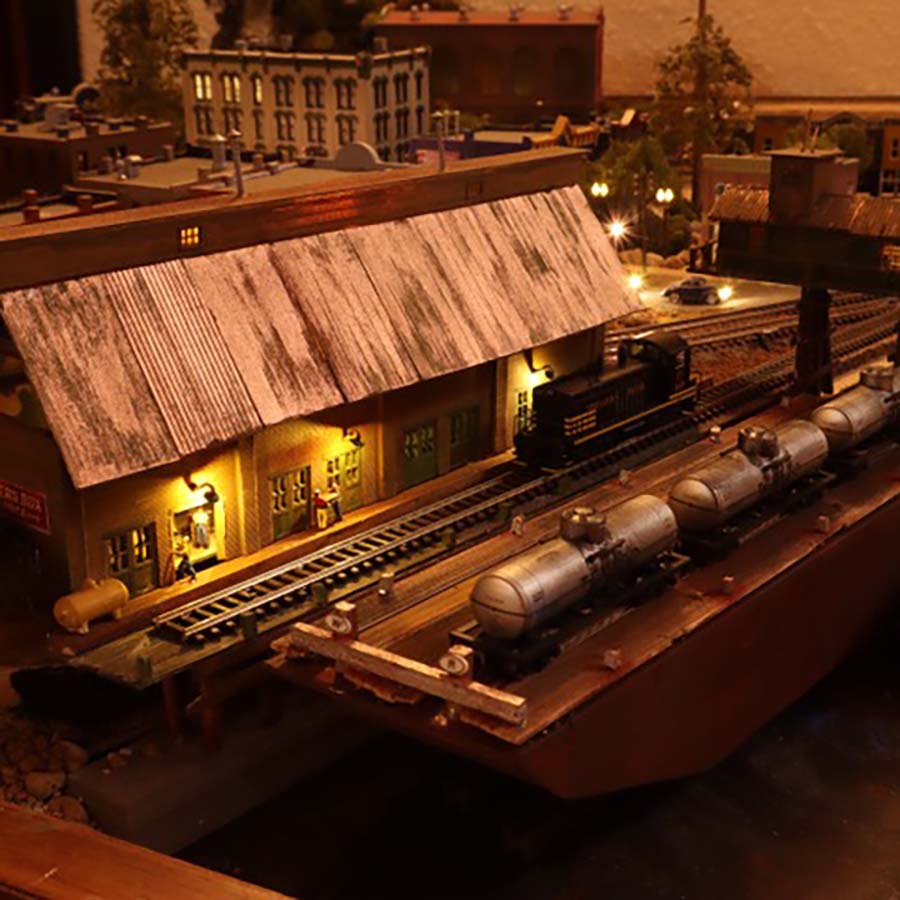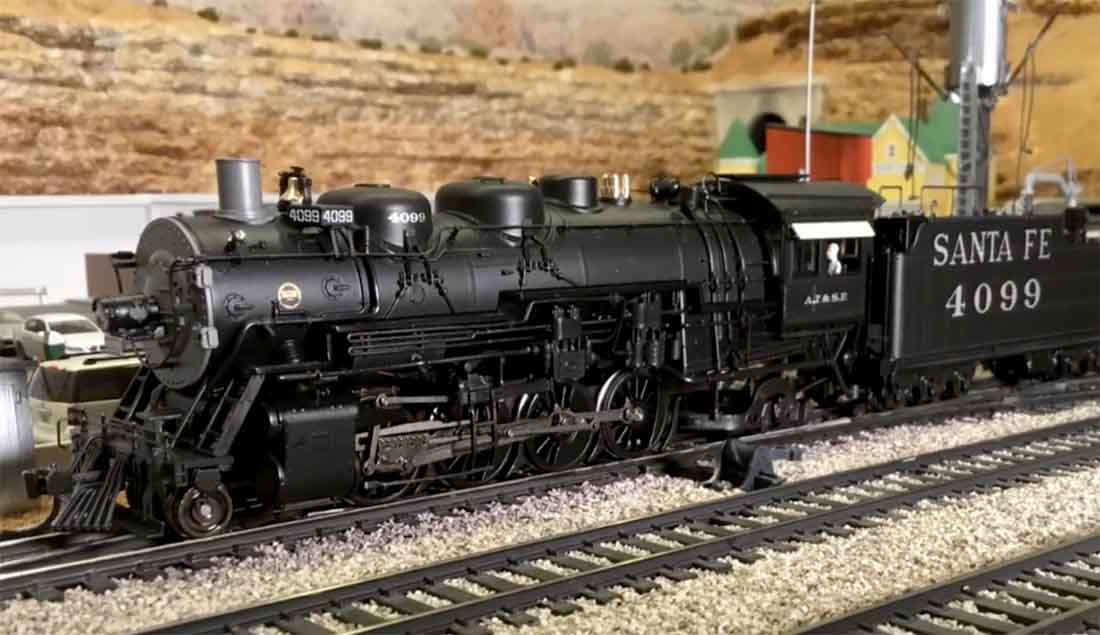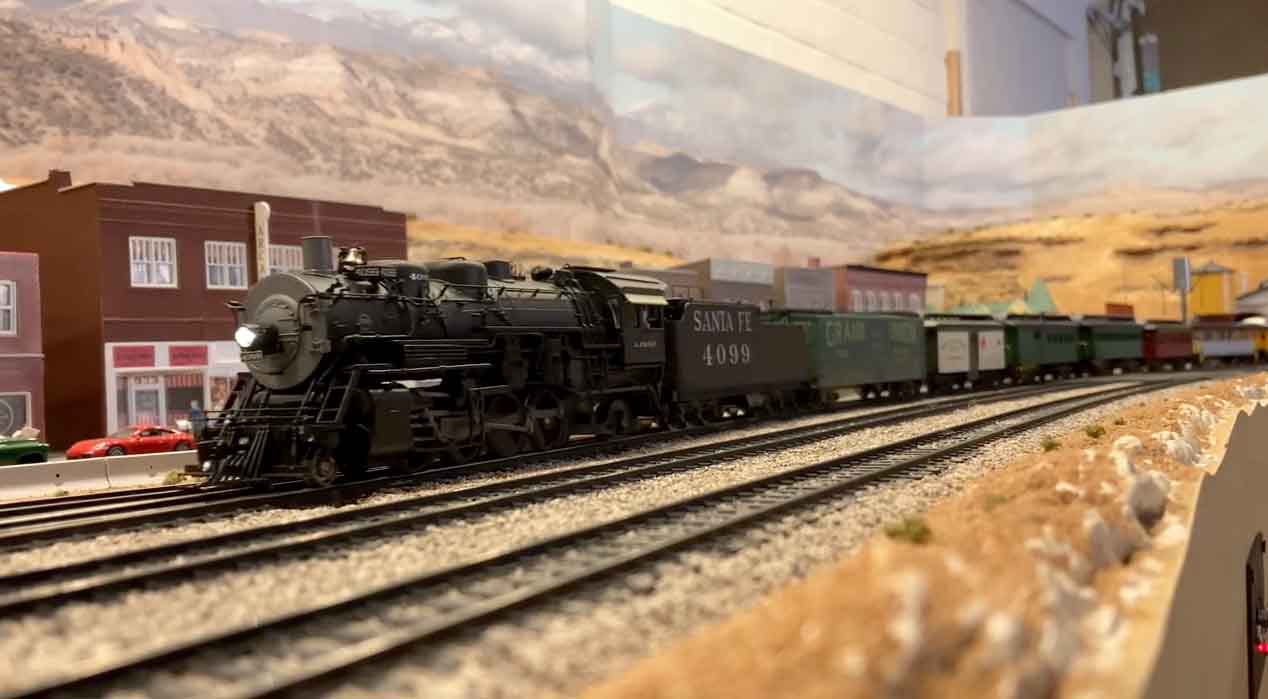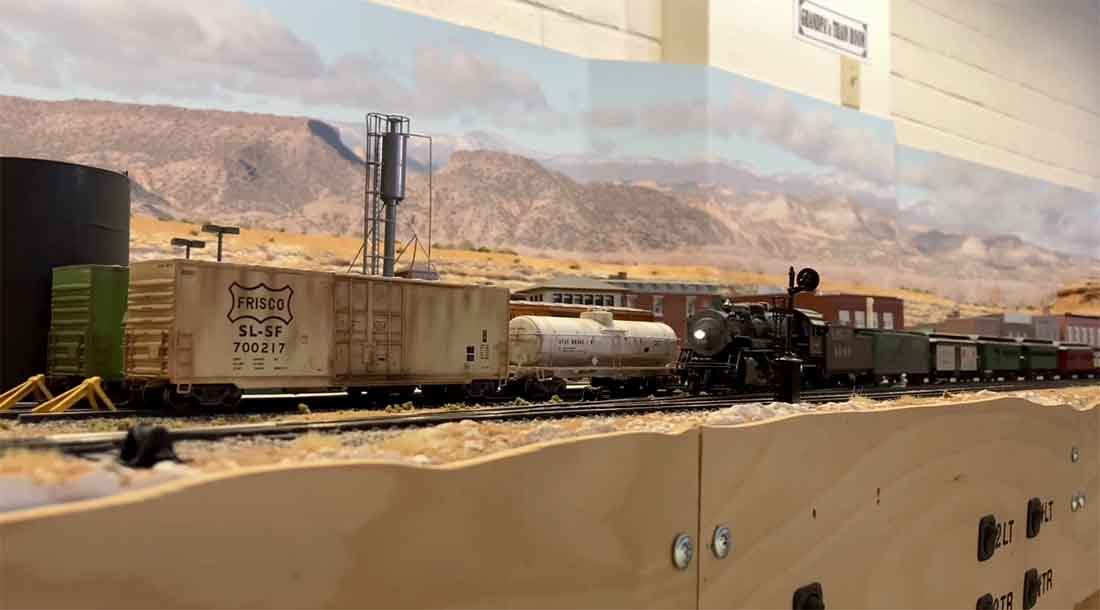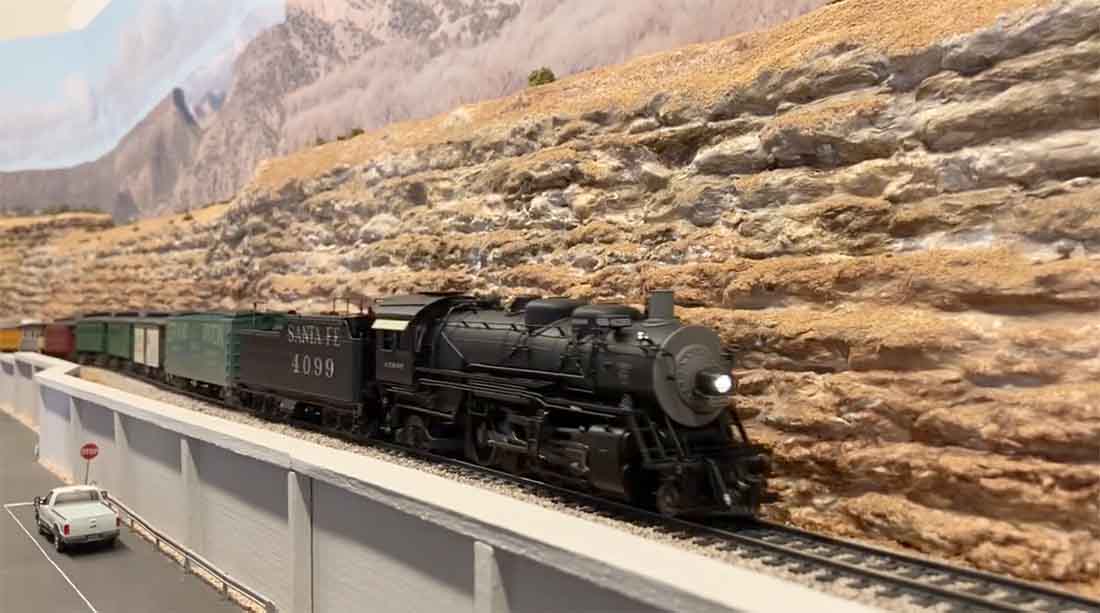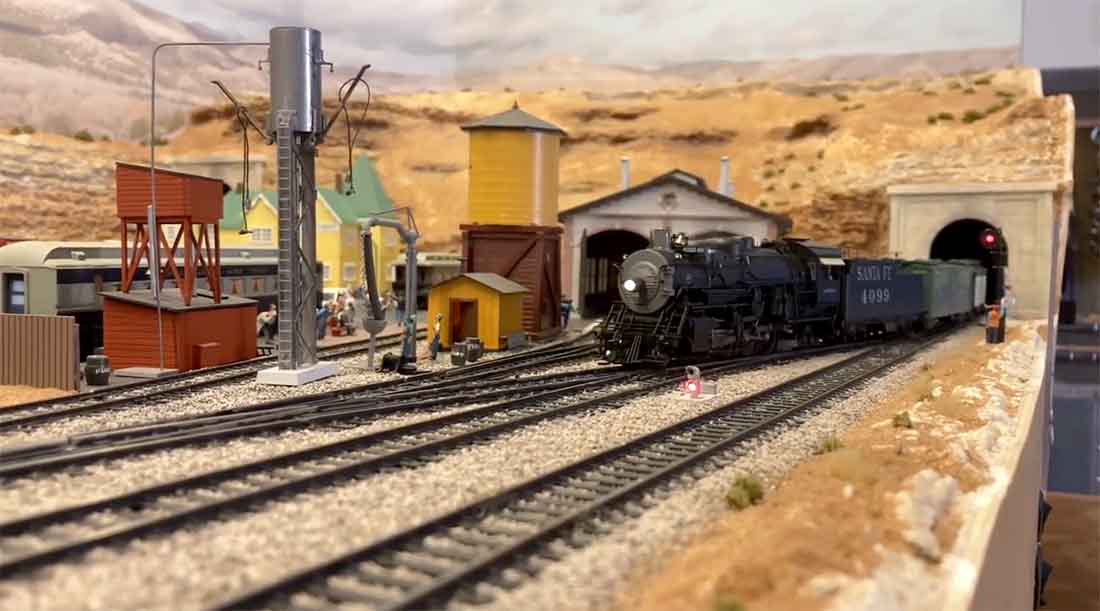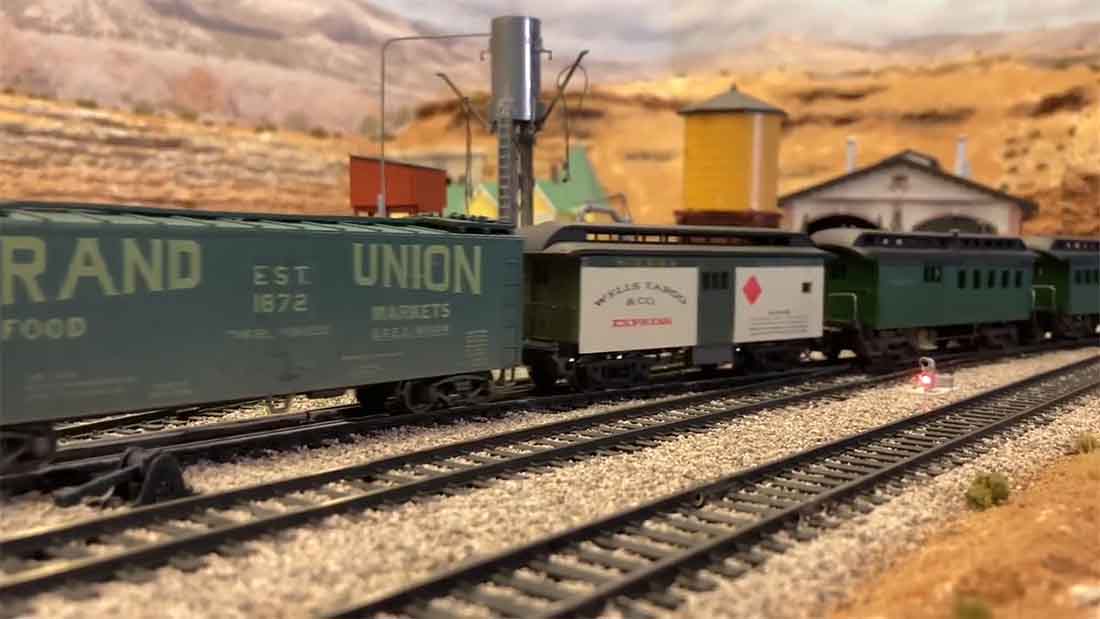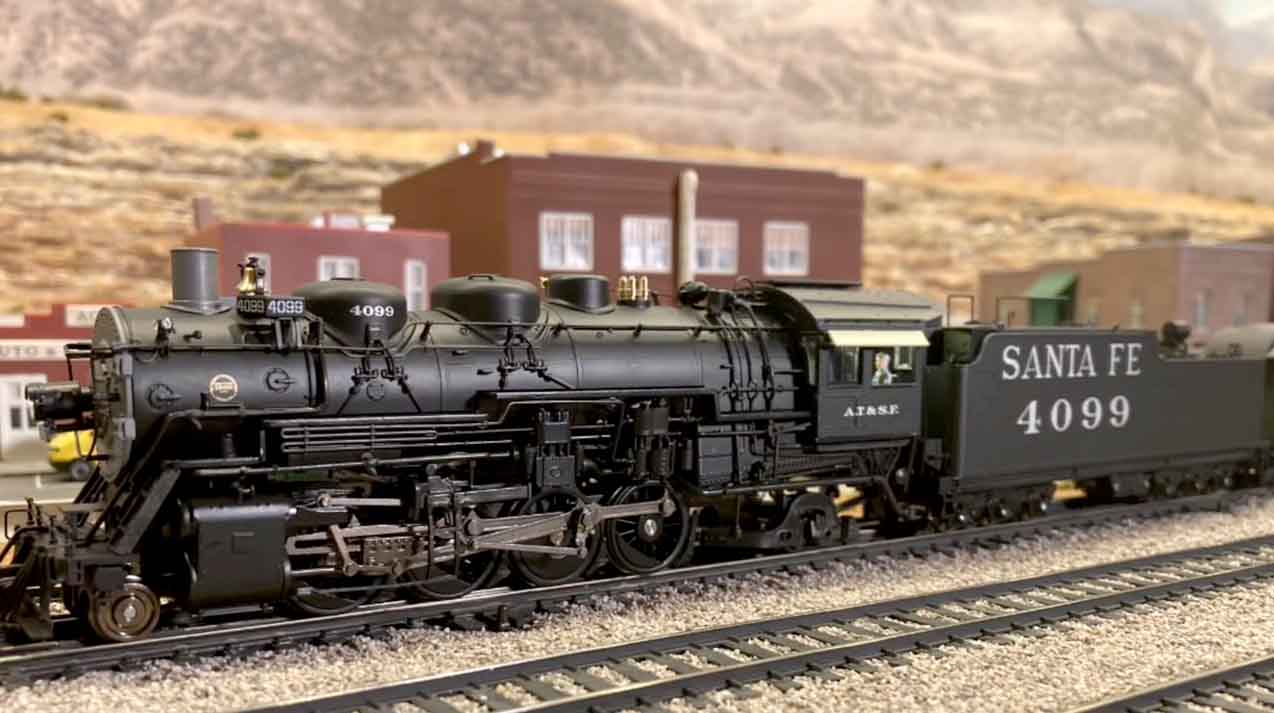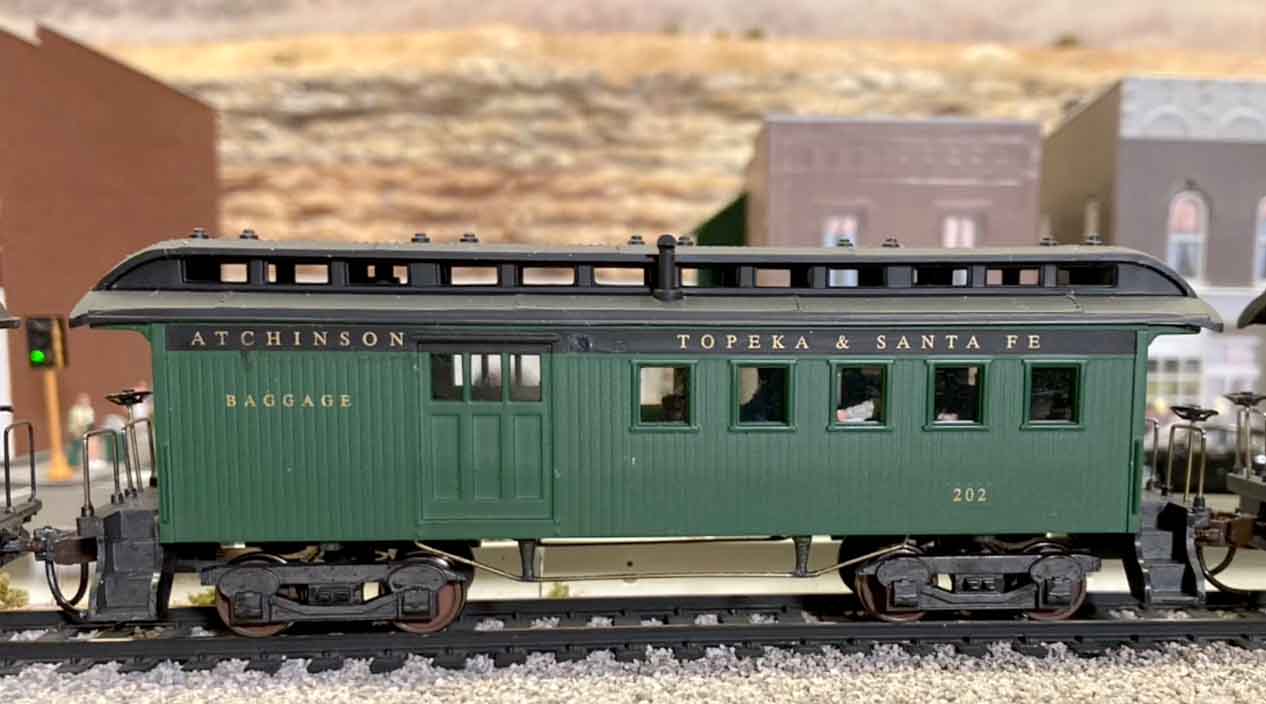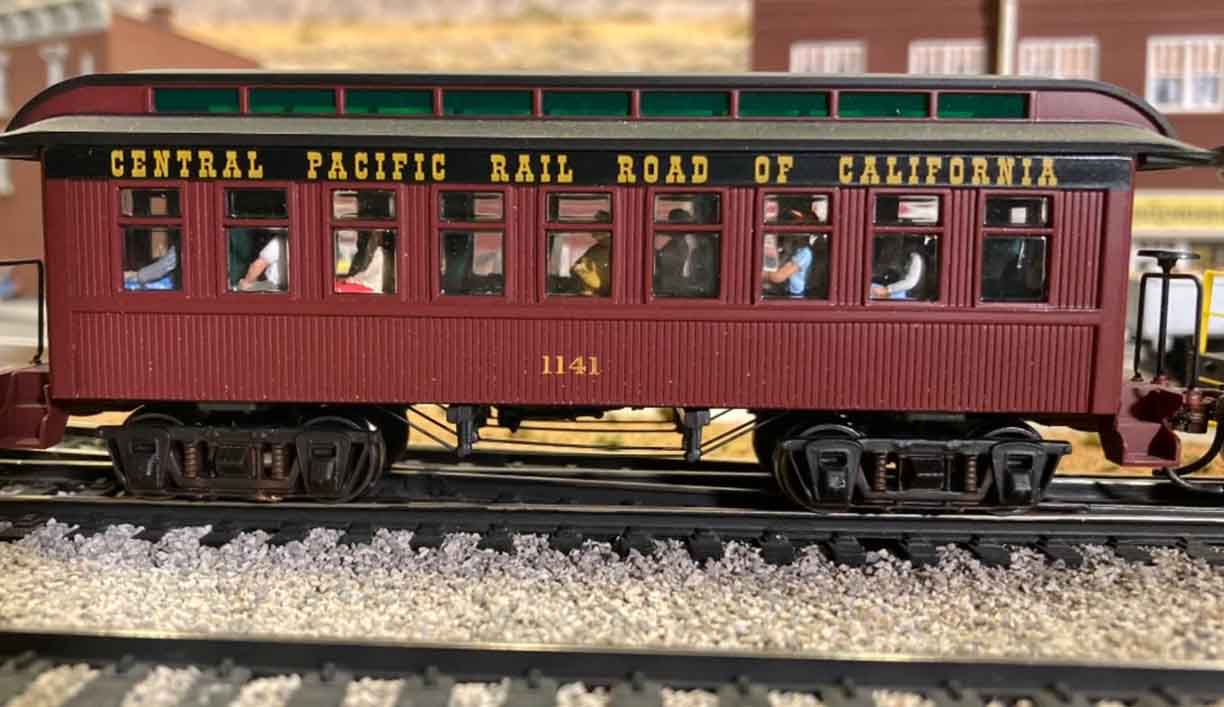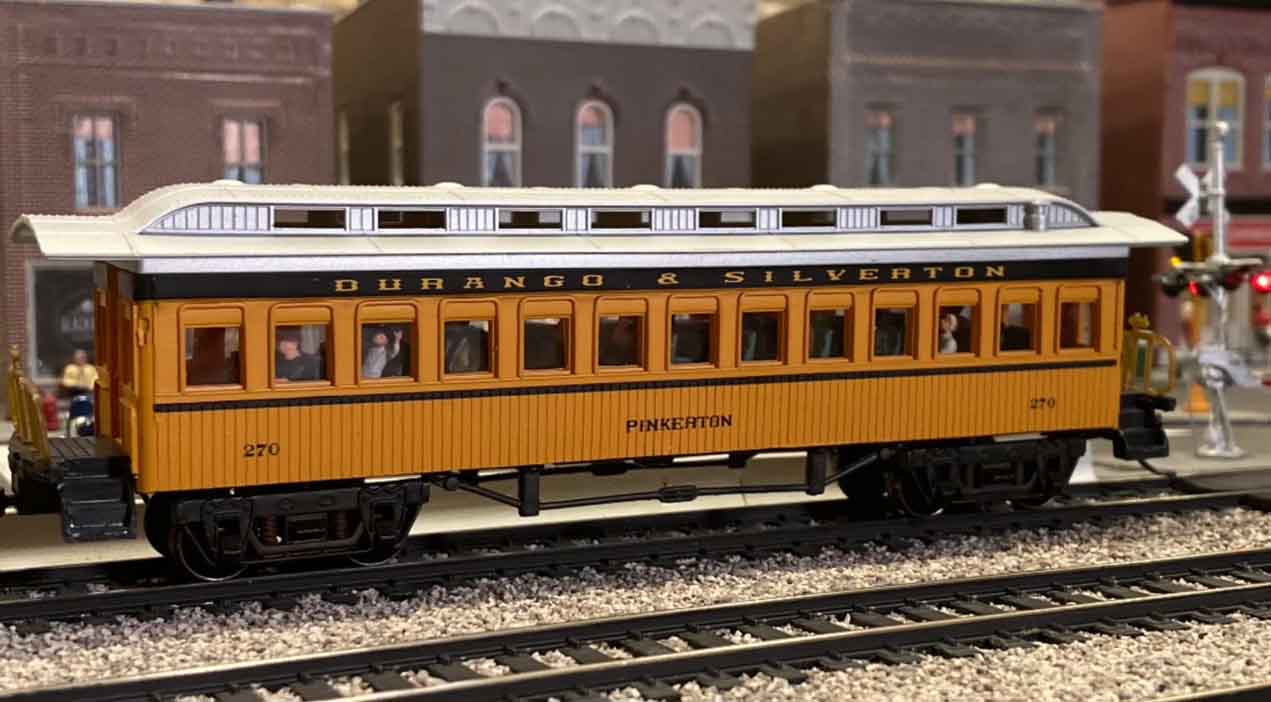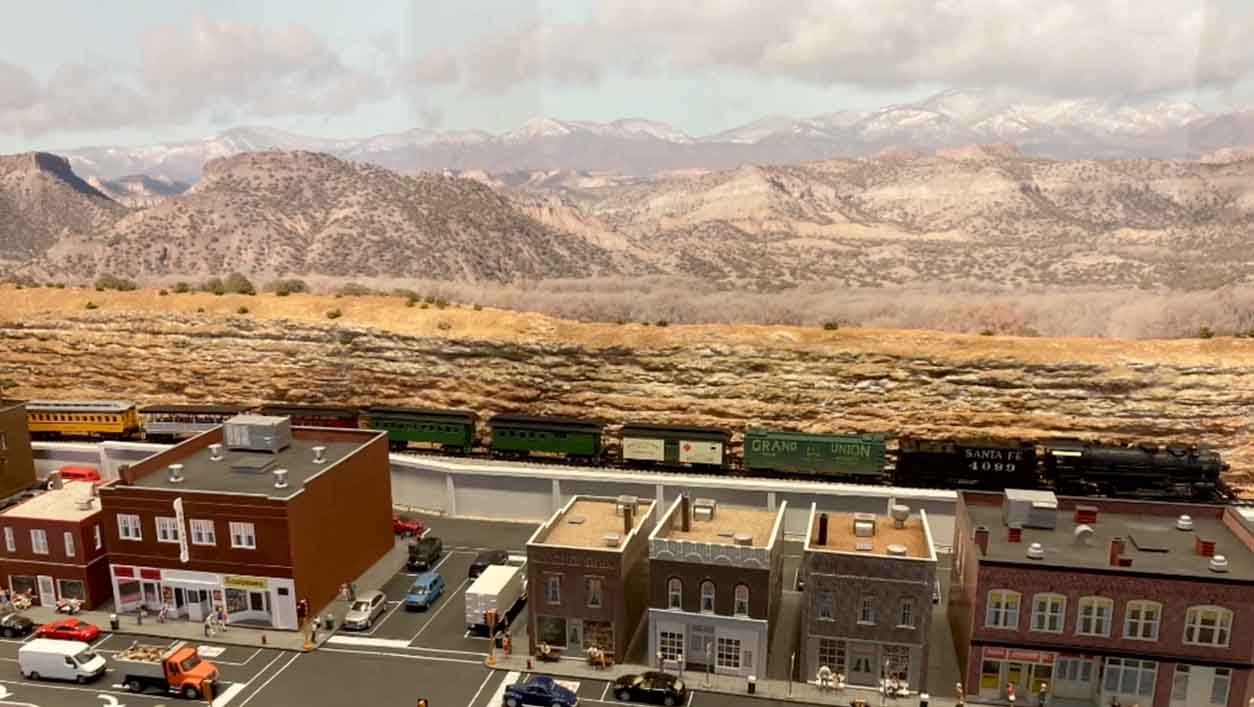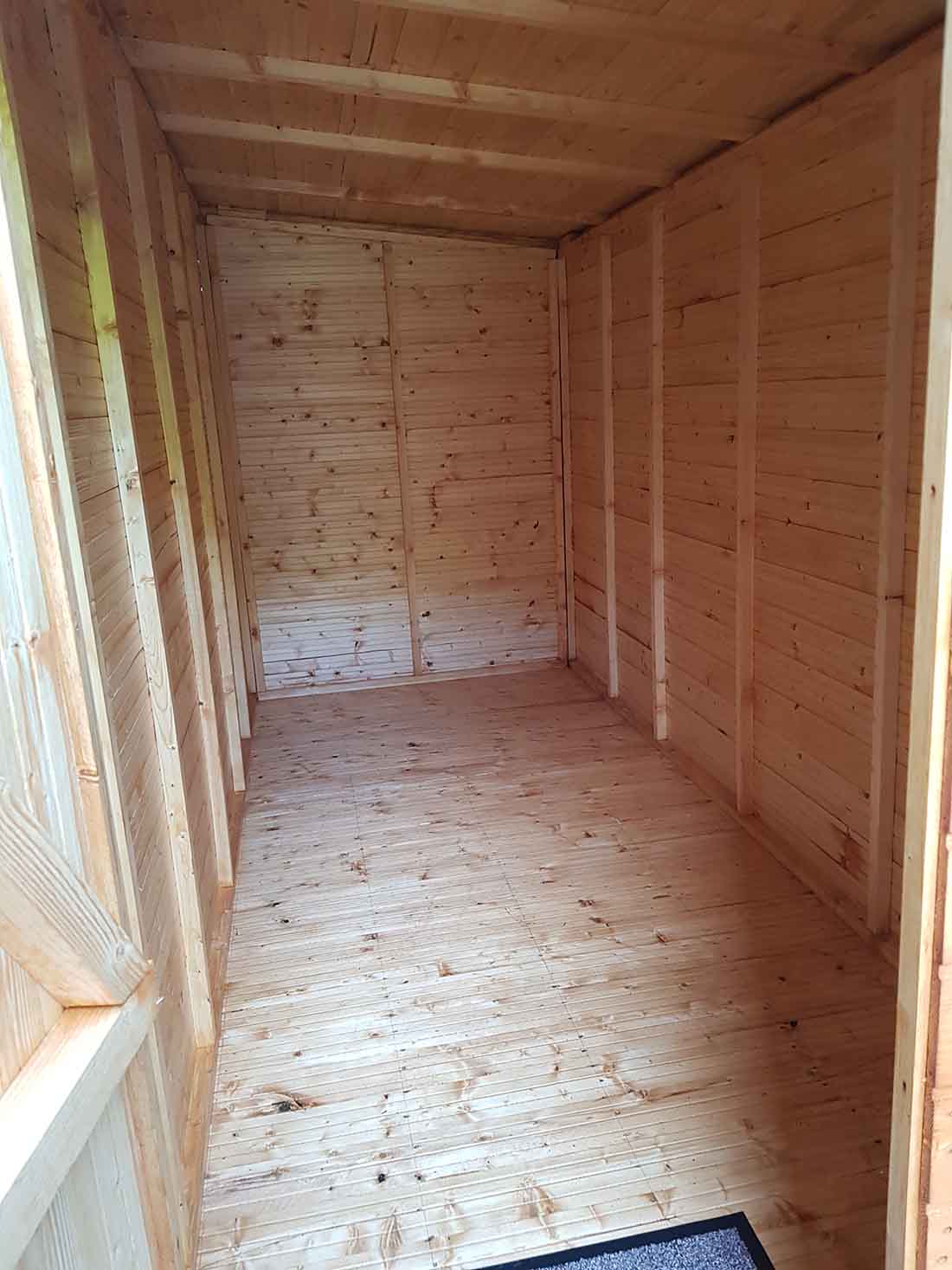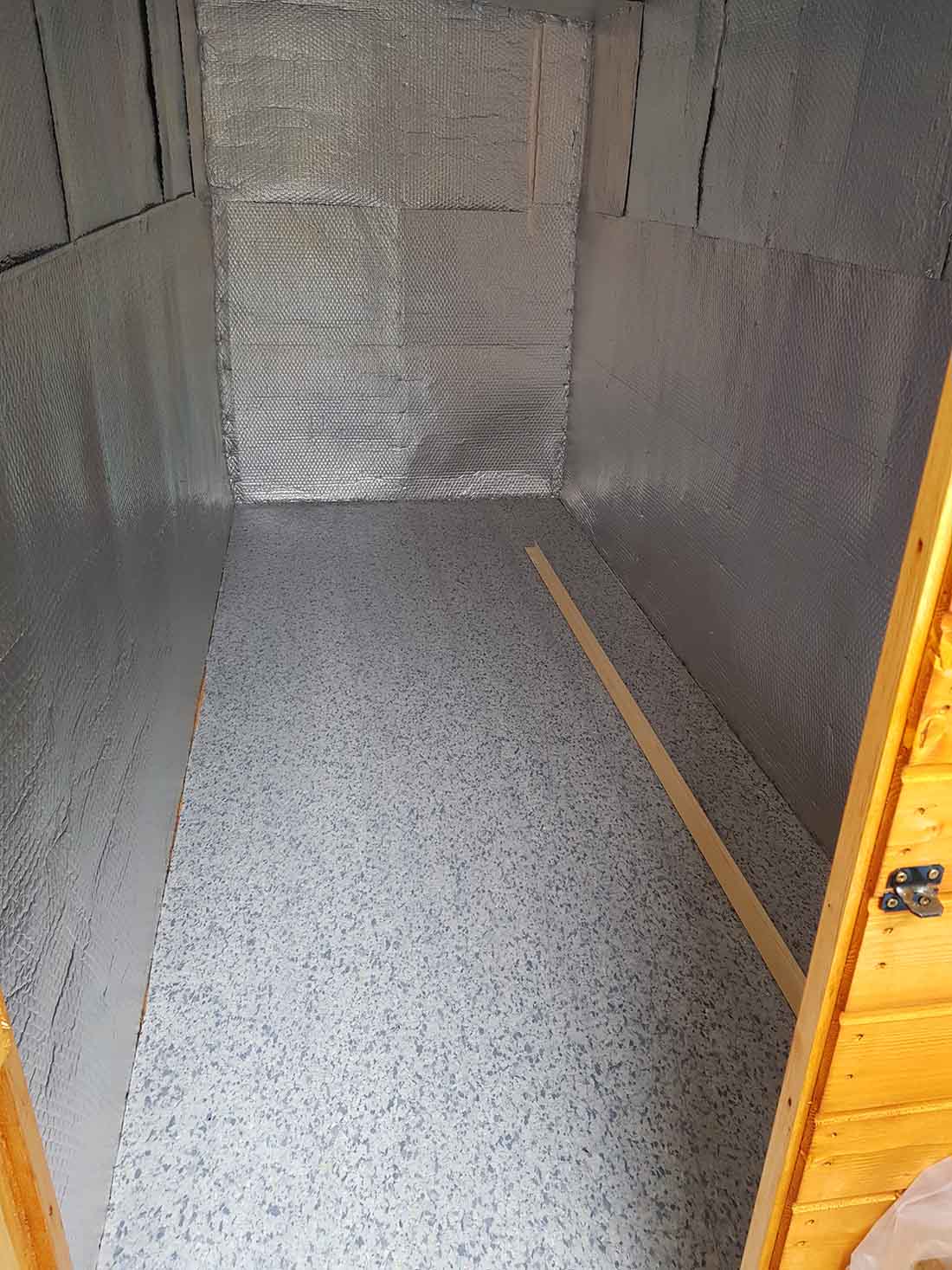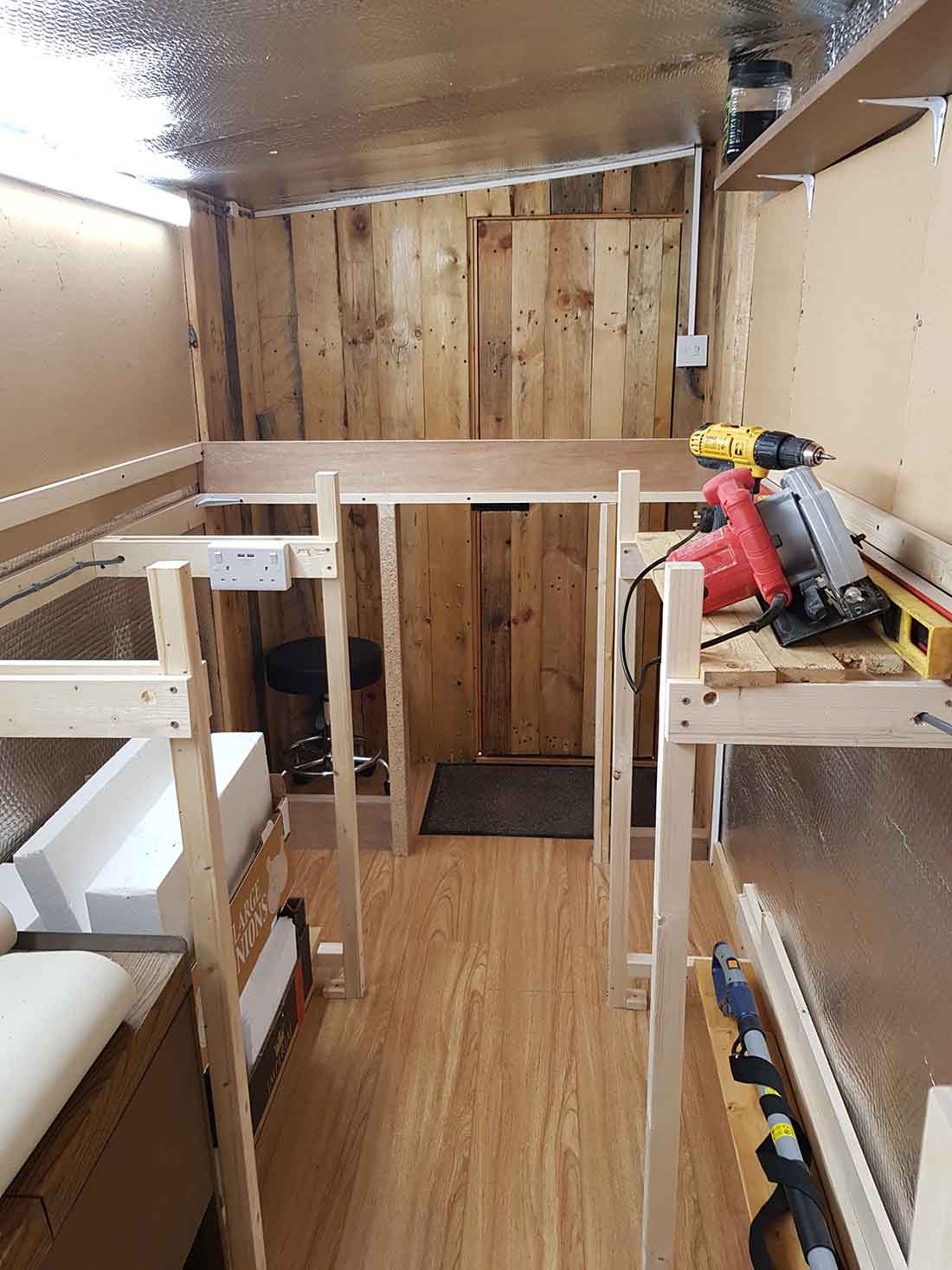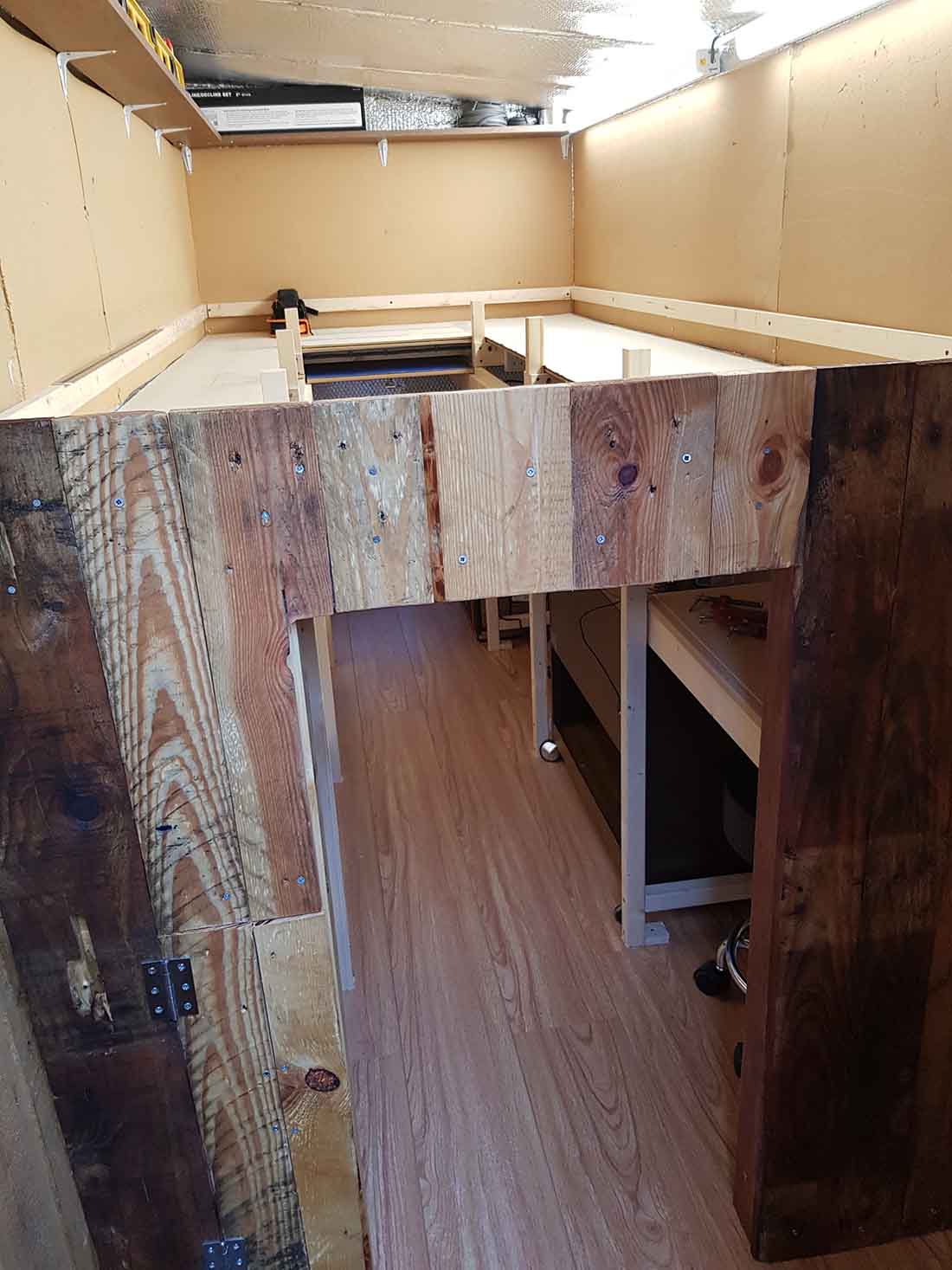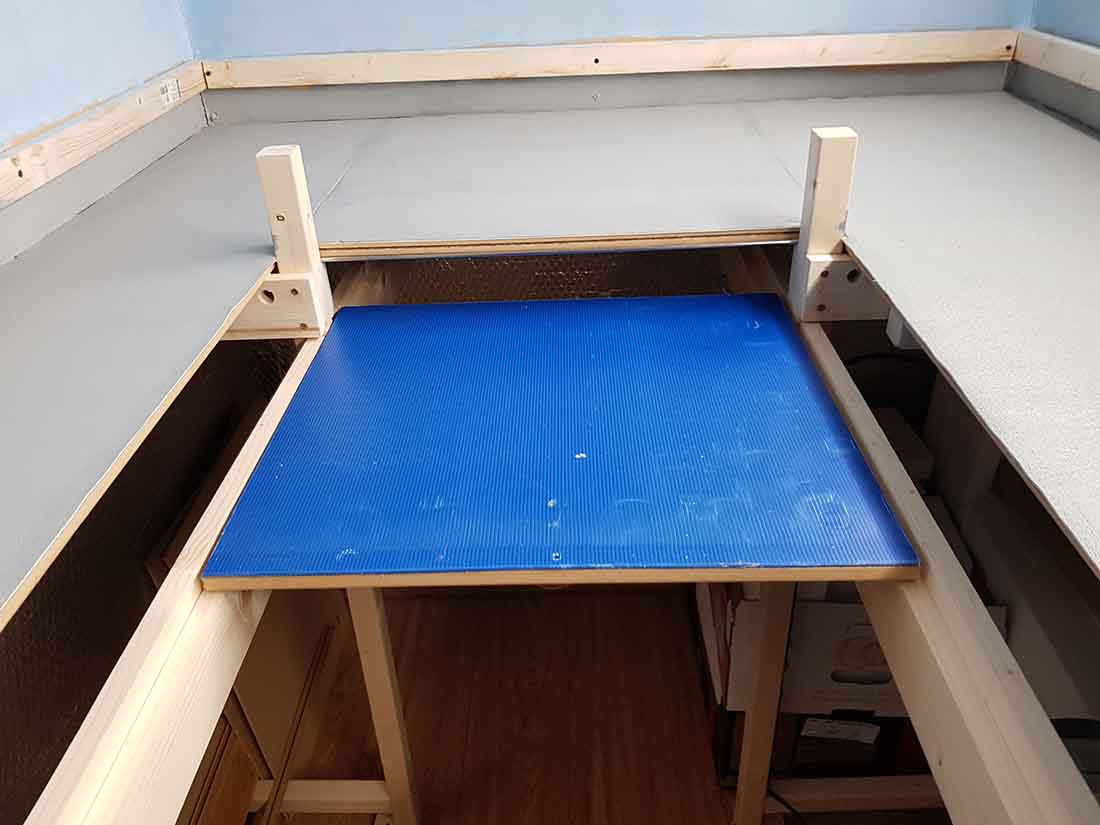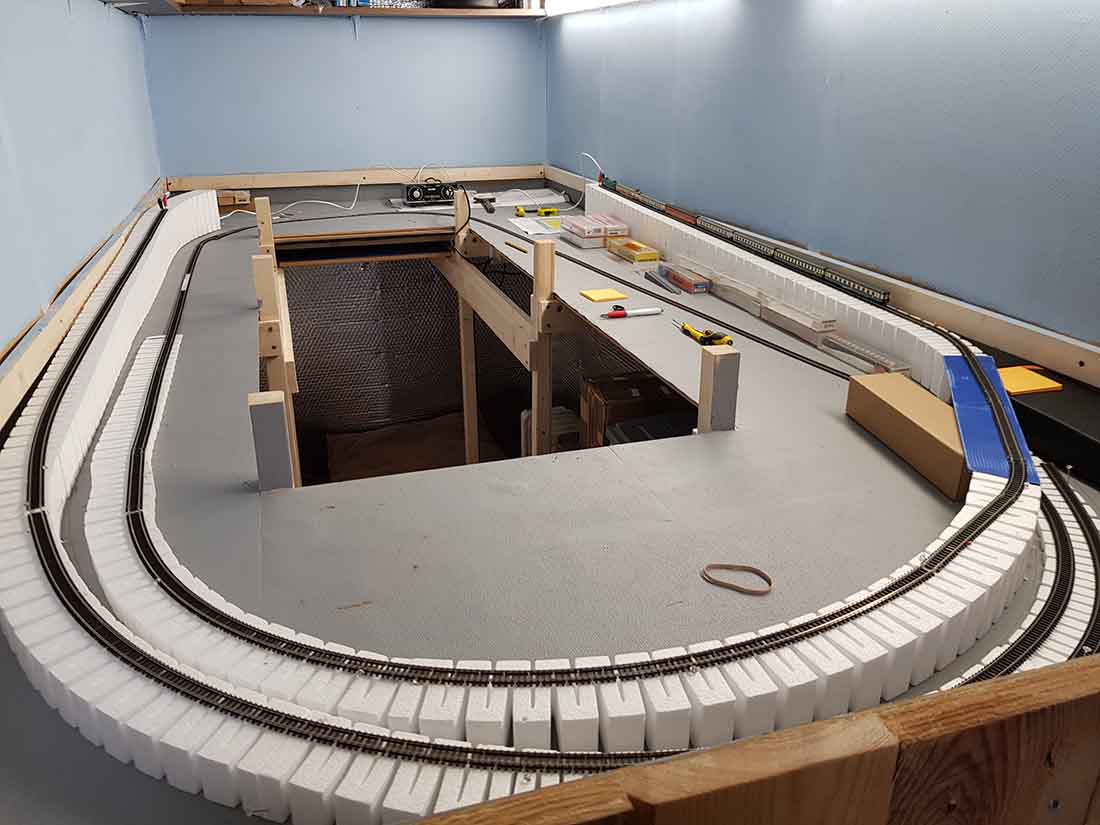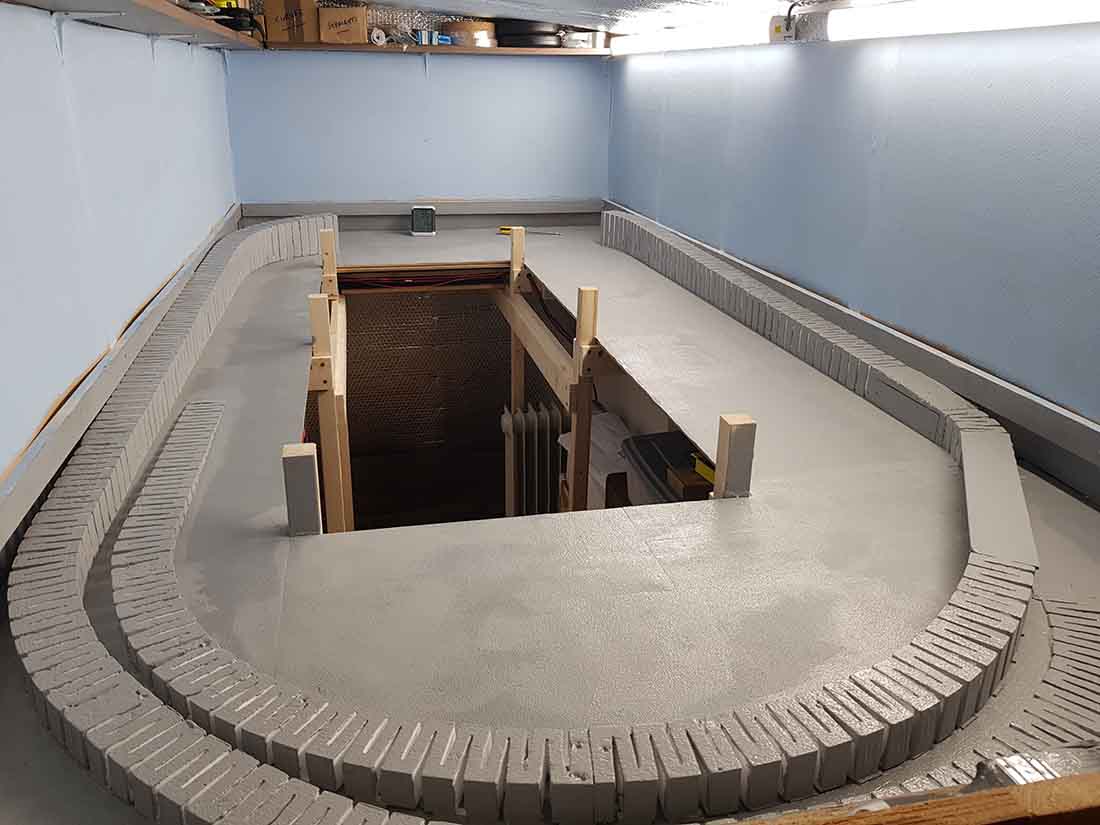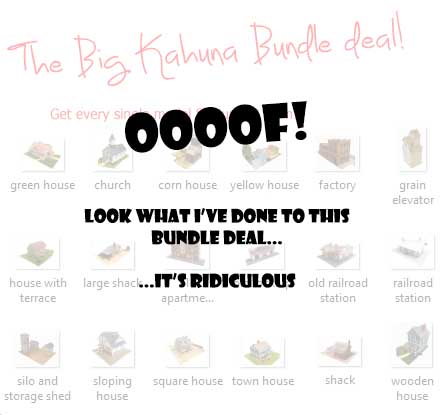Jim’s been in touch with his HO Santa Fe layout:
“I will be 75 next month and I have “played” with model trains all my life.
When I was five years old my father bought me my first train set.
It was an O-gauge CB&Q Zephyer. He bought it used from a friend whose son had grown tired of it.
My dad covered a 4′ x 6′ sheet of plywood with a green Army blanket and tacked down an oval of track with a passing siding.
Together we added some houses, roads, cars and trees. Good times.
About 3-4 years later I got a A-A Santa Fe Marx set for Christmas.
When I got older we passed those sets on to younger kids in our neighborhood and I messed around with HO for a couple of years.
Then life happened. After High School, I enlisted in the Army and served in Vietnam and Washington DC. Got out of the Army in 1969 and went to college.
After graduating landed a good job, got married, bought a house, and raised two great kids.
During that time I was in-and-out of N-scale and 3-rail O-scale.
I build an 18′ x 8′ O-Scale layout in my basement and was a founding member of the Independent Hi-Railers Midwest Division.
We had the LARGEST modular Hi-Rail layout in the world and would travel to major cities (New Brunswick NJ, Cleveland OH, Madison WI, St Louis MO, Minneapolis MN, Chicago IL) to set-up, display and operate our layout.
In addition, we also participated in 4 or 5 local shows each year.
Fast forward, I retired at age 58 with plans of building a large HO layout in my basement.
Many starts and stops, tear-down and rebuilds. I was never satisfied with the results. My carpentry and electrical skills never measured up to my desired standards. I wish would have realized that sooner.
I met with the good people at PMD (Professional Model Design) to discuss having them build an HO layout for me.
Yada, yada, yada… 16 months later they delivered a beautiful 11′ x 22′ HO layout.
For now, I will just post this video. In the near future, I will provide more information and include pictures of the build process and MORE videos.
For now, please enjoy these.
Jim”
A big thanks to Jim for sharing his HO Santa Fe layout.
Now on to Peter.
He’s been busy scratch building from the printable buildings:
“Hi Al,
Here’s one of my scratch builds.
Peter”
I really do a get a kick out of seeing what you’ve created with the print out scenery.
A huge big thanks to Peter and Jim.
Really liked Jim’s back story, especially the line, “then life got in the way”.
It’s something we can all relate to.
But I think he’s made up for time with a HO scale 11×22 in his basement. Looks great.
That’s it for today peeps.
Please do keep ’em coming – just hit reply to any of my mails if you’d like to share anything.
And if today is the day you jump in and join in the fun, the Beginner’s Guide is here.
Best
Al
PS More HO scale train layouts here if that’s your thing.
Need buildings for your layout? Have a look at the Silly Discount bundle.
